It’s a challenge to figure out the exact wants and needs of the end user and implement that knowledge directly towards the development of your software. That is how user stories came into existence. Writing user stories has been one of the ultimate software design and development solutions to understand end-user requirements. According to Wikipedia, Kent Beck (an American software engineer) first introduced user stories in 1997.
User stories in Agile have grown in popularity in the last two decades due to their capability to understand customers at an in-depth level and for being highly flexible. The requirements of end users keep changing every other day and user stories can be amended according to such needs to improve their contribution to mobile app development.
When merged in the agile framework, creating user stories for your app helps you meet the requirements of a larger target audience. It provides the best way to utilize user stories for your software and app.
Read on to discover more about user stories and the user story template, and to see some examples of user stories.
What is the Agile Framework?
The Agile framework is the management of a project by dividing it into multiple phases to give a fail-fast direction to its development and final results. In simple words, an Agile framework is a specific approach to planning, managing, and executing work. Agile frameworks typically fall into two categories: Frameworks designed for teams, and frameworks designed to help organizations practice Agile at scale, across many teams.Digital.ai’s 15th State of Agile Report states that the number of software development teams adopting the Agile framework has increased by 87% in 2021 compared to 37% in 2020.
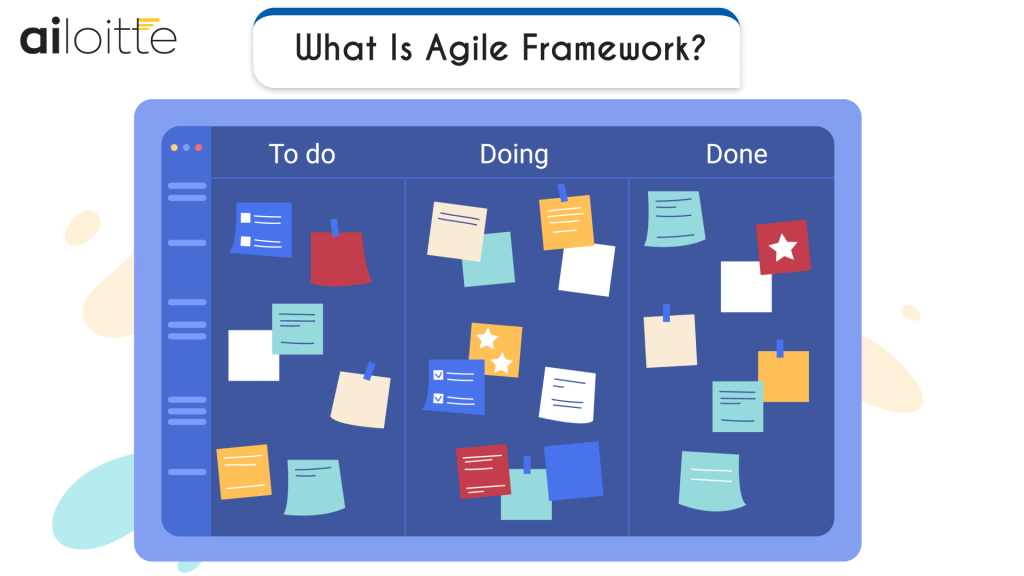
What is a User Story in Agile?
A user story is a small unit of work in an Agile workflow. It is a short, written explanation of a particular user’s need and how it can be fulfilled. Every agile user story includes a written sentence or two and, more importantly, sparks a series of conversations about the features and functionality the user story represents. It helps the product manager and development team shift their focus from writing about the software features to discussing the features.
User Stories were created to replace the need for traditional requirements documentation, which took teams forever to write and often handcuffed developers to just one way of doing things from the very start. User Stories help to simplify how developers and production teams work on new product updates and features by emphasizing small, regular updates based on what the end-user will benefit from the most. User stories typically follow a simple template:
As a < type of user >, I want < some goal > so that < some reason >
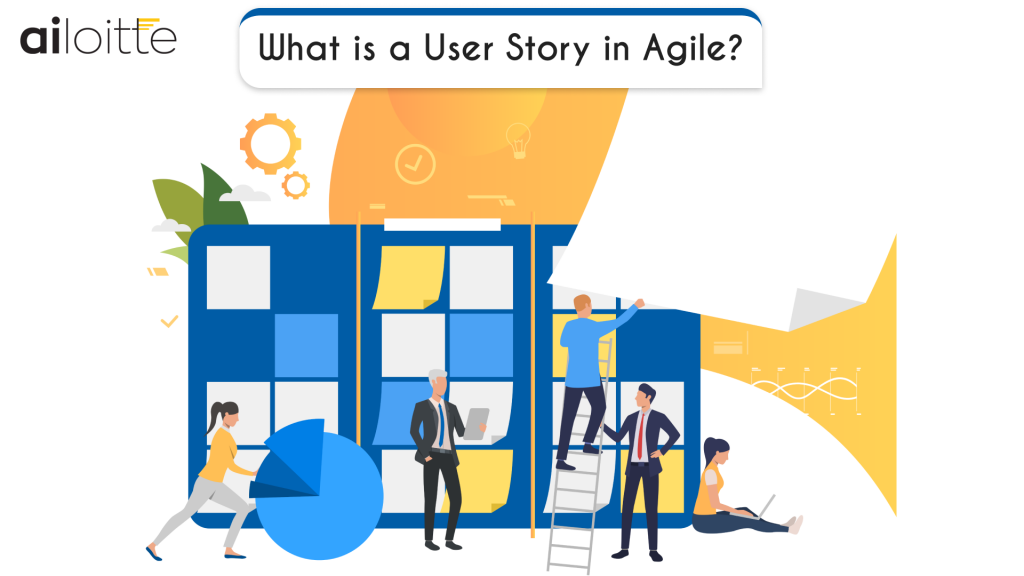
User story example:
“As a new telemedicine app user, I want to connect with my doctor on a video call, so that I can quickly get proper consultation whenever I need it and the necessary digital prescription for my condition.”
In short, a user story explains the “Who, What, and Why” of your software end users. That is why writing user stories is an integral part of Agile software development.
Creating user stories helps describe the end-user perspective on the app functionality. Knowing this crucial information helps developers build a user-oriented product.
The best part is that you do not need technical knowledge of mobile app development to know how to create user stories. Any individual, startup, or business owner can do it to present their product requirements.
What is a User Story Template?
A user story template is a common format used to write user stories that help you include key pieces of information about that user story.
One particular template, often referred to as “As a… I want to… So That…” is the most commonly recommended aid (often outgrown once past the novice stage) for teams and product owners starting to work with user stories and product backlog items in general:
As a (who wants to accomplish something)
I want to (what they want to accomplish)
So that (why they want to accomplish that thing)
An example:
As a bank customer
I want to withdraw money from an ATM
So that I’m not constrained by opening hours or lines at the teller’s
Scrum in Agile Software Development
Types of User Stories
We can divide user stories into functional and technical types:
I. Functional:
Normally, a user story is written on the basis of functional aspects of the application software yet focusing on the user and the value of the functionality provided to the user. Functional stories focus on the product features that the customer will be testing at the end of a repetition based on the acceptance criteria defined for the story.
II. Technical:
Technical stories are written to be able to support the functional stories. Technical stories can be classified as
a) Infrastructure stories: any infrastructure addition/modification that may be required to support the functional story.
b) Refactoring: this type of story is written to maintain the code and address technical debts. This can be used for designing and automation needs as well.
c) Spikes: stories that require research on architecture and design which may in turn help achieve the functional needs of the customer.
Importance of Writing User Stories
Writing good user stories includes a non-technical approach to provide the right direction for the technical process of software/app development. The agile framework typically includes user stories to emphasize aspects that bring value to the final product.
User stories primarily serve the users. They show what problems users have and which solution they prefer for their problems. Developers can use this information to build a product designed specifically for the end-user needs.
User stories also lead to better product clarity as the team has a story that defines the final goal of the product, which gives them clarity into the creative solutions they will need to apply for every requirement of the end user.
Benefits of User Stories
The initial stages of mobile app development can involve multiple creative ideas but only if you get someone who knows how to write a user story for every functionality, you will be able to finalize one.
And below you can find some benefits of user stories:
- A user story quickly describes what features you need to build and how to build them.
- Individuals with both technical to non-technical backgrounds can understand user stories and implement the required changes collaboratively.
- It helps build software and apps from the user’s perspective.
- User stories help the developers, product owners, and business owners to reach a mutual consensus as they discuss the details and agree on the acceptance criteria.
- Short agile stories are easy to implement in the development process.
- It gives every team member the same goal to work towards and achieve.
- These stories help create a development strategy that can guarantee satisfactory results both for the user and developers.
- The focus is on the user to provide value to them; the user story clearly describes the expected outcome of every action performed.
Key Aspects of a Good User Story Development
Writing great User Stories always fits the INVEST set of criteria introduced by Bill Wake:
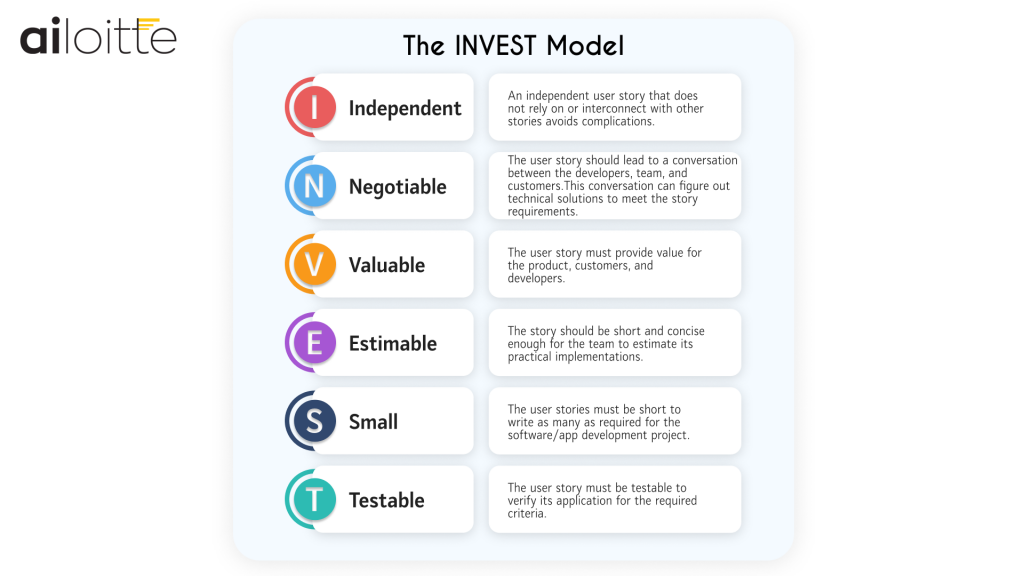
The most straightforward answer to what is a good user story is as simple as the question: simplicity and clarity. Only a Mobile app development company with such skills can create user stories that add value to your project. You’ll be surprised at how effective a sentence or two can be in the context of refining user tasks. Simple user stories say exactly what needs to be said and can be put into play much easier than writing a novel about a menial issue.
Agile user stories are made of three factors that Ron Jeffries named in 2001 with the wonderful combination of card, conversation, and confirmation:
- Card: Written description of the story, used for planning and as a reminder
- Conversation: Conversations about the story that serve to spread out the details of the story
- Confirmation: Tests that convey and document details that can be used to determine after a story is complete.
When are user stories written?
User stories are written all over the Agile project. Generally, a story-writing workshop is held at the start of the agile project. Everyone on the team participates with the aim of creating a product backlog that fully describes the functionality to be added over the course of the project or a three- to six-month release cycle within it.
Some of these agile user stories will undoubtedly be epics. Epics will later be dissolved into smaller stories that fit more readily into a single iteration. Additionally, new stories can be written and added to the product backlog at any time and by anyone.
How to Write User Stories?
You must understand every essential aspect of writing good user stories before you do it for software/app development. Only then can you build an app that serves every requirement of users.
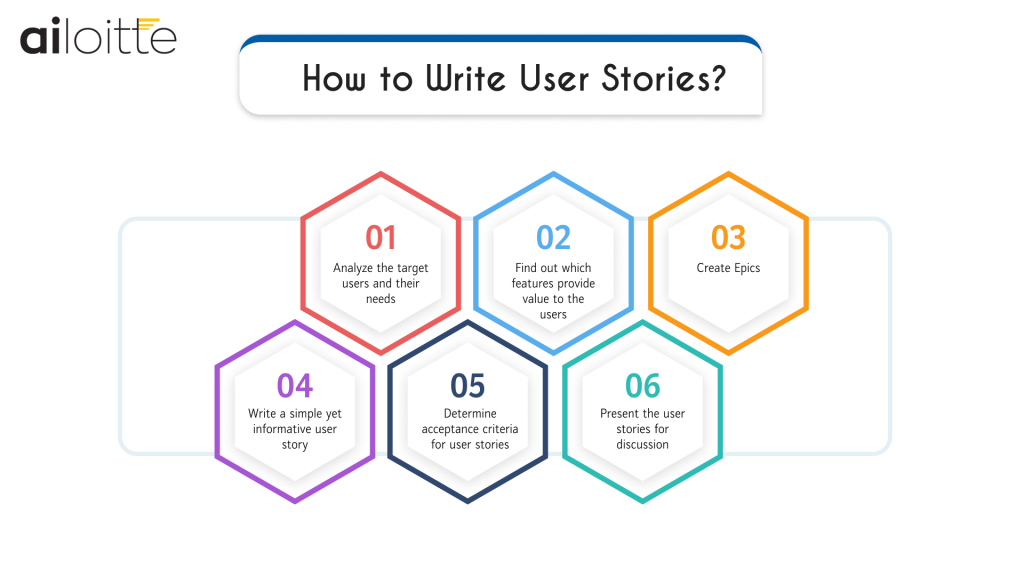
I. Analyze the target users and their needs
a. WHO
Identify your target end users to understand the common problems they have that you can solve with your software. Good research will help you create a semi-fictional buyer persona for your end users. Another way to look at it will be to create a buyer persona of your end user to simplify the process.
b. WHAT
You can move forward with the solutions the end users expect once you know the common problems they have. For example, which feature do users need? Which functions do they not want yet but would like if available? And which errors can make the user avoid your app altogether? You must provide solutions for such problems to ensure a user-friendly and satisfactory experience.
c. WHY
Figure out why the users want a particular feature and what they hope to gain with it. It will help you figure out how much the users will pay without doubt for the solution you provide and the value the solution brings to them.
You can also conduct interviews with target users, figure out pain points, and ask the right questions. The expert implementation of these three factors will ensure that you create a unique user story design for your software/app development project.
II. Use personas to discover the right stories
The key to writing a great user story is empathy. Give your “user” a name. Create a proper persona for them. Remember some people who you know from real life and who fit this portrait and try to relate to this target group. Ask yourself what functionality the product should provide to meet their goals.
III. Find out which features provide value to the users
You have to determine which features provide value and which do not once you figure out the who, what, and why of your end user needs.
Get a better understanding by asking yourself questions like:
- How does a particular feature improve the user-friendly experience of the app?
- How many end users prefer the same functions?
- What kind of feature can motivate them to download the app?
- What features can solve most of the common problems the end users have?
Your team will know the right direction to follow with app development when you create user stories for every essential functionality. This approach helps developers understand the importance of a particular feature and the benefits it will bring to users and businesses.
IV. Create Epics
Write epics that emphasize the key features of your app without mentioning its technical aspects. For example, If you are building a healthcare app where users need the feature to buy prescribed medicine on the app itself, the epic for it would be “Buying medicine online 24/7 with 1-hour delivery”.
You have to create epics for every functionality that you plan to provide. It will help you divide large epics into short descriptions known as user stories.
V. Write a simple yet informative user story
The user story format must be easy to understand for every team member, end user, and investor/stakeholder.
Here is an example of a user story for creating a food delivery app:
As a food delivery app user, I want a search and filter feature for cuisines/restaurants, so that I can easily find the ones I prefer.
Such a user story format is understandable by anyone like end users, developers, investors, and stakeholders. It provides everyone with the final picture of the direction the development team will choose.
Tip: Use the most basic sentence structure with commonly used words. And do not write any complex words or technical information in it.
VI. Determine acceptance criteria for user stories
The acceptable criteria are the predetermined requirements that help determine the completion and practical application of a user story. These criteria can include technical, non-technical, and performance factors of the software/app.
The acceptance criteria is a stage where developers determine the steps and requirements of the chosen feature to bring the user story to life. They provide the required data to confirm that the story is compatible for testing, estimation, and execution.
VII. Present the user stories for discussion
Discuss the user stories with the development team, investors, and stakeholders. It’s the final step to ensure that everyone involved understands the same goal they have to achieve. The various team members could point out the weak points of the user story and whether a particular user should be a priority or whether it only serves a tiny and inconsequential portion of the target audience.
This discussion will also help the developers determine and present the steps necessary for the final implementation of app and software development user stories. The feedback and perspectives of every team member will also help ensure the practicality of user stories.
Final Remarks
User stories are a primary part of Agile methodology and are invaluable to your working process. Especially since they help developers understand the end-user perspective on app features – information they can use in the initial development stage to ensure a satisfactory product. However, if you follow the criteria set by I.N.V.E.S.T and focus on the three essential components, you can make great user stories easily. They let your teams understand the perspective of different users and can drastically improve the value and functionality of your product.
User Stories can help you to constantly improve the value of your product, estimate development efforts in an appropriate way, and prioritize feature development during the MVP and post-MVP stages.Looking for someone who can write great user stories for your app is not an easy task but you can easily find one in an all-in-one software and mobile app development company like Ailoitte. We have a team with the expertise to write impactful user stories for many types of app development projects.
Frequently Asked Questions
User stories are a phase in the Agile methodology that presents “Who, What, and Why” factors about your end users. It explains the end-user perspective on your product.
Creating good user stories helps you set a user-centric direction for the development process. It helps ensure a satisfactory final product for the target audience.
User stories in Agile software development present the end-user perspective about the software requirements. It describes who the users are, what they want, and why.
A user story includes three things – Who, What and why. To further describe that, the “who” explains the role the writer plays. The “what” describes a function. The “why” represents its business value.
User stories clearly describe the end-user expectations of a particular product. Developers know the exact direction they need to follow during the development process to meet such requirements.
Yes, user stories will provide a comprehensive guide about app features desired by the end users/target audience and why.
For example, a user story for a mobile app sounds like “As a frequent traveler and dating app user, I want the app to detect and change my location automatically so that I can find the right people near me at any time.”


















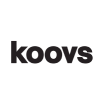
.png)
.png)
.png)



Your article helped me a lot, thanks for the information. I also like your blog theme, can you tell me how you did it?